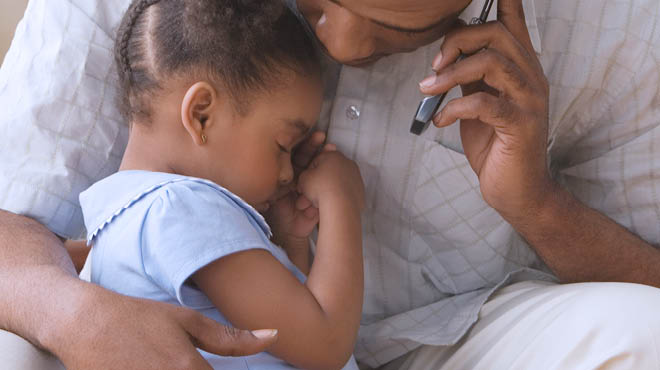Recent Posts
Delayed umbilical cord clamping benefits baby, affects cord blood donation

Cord blood is the blood that remains in the umbilical cord after birth. It contains red blood cells that can carry oxygen, nutrients and stem cells. Stem cells replenish cells in blood, skin and organs.
Here are answers to common questions about delayed cord clamping and cord blood donation:
How can a doctor or nurse midwife maximize the benefit of cord blood for your baby?
When your baby is born, delaying cord clamping for 30–60 seconds benefits your baby. Delaying cord clamping for this time frame allows for higher distribution of blood to your infant rather than leaving this precious blood in the placenta.
If cord clamping occurs 10–15 seconds after birth, 67% of the umbilical cord blood goes to the infant. By 1 minute of age, the amount of cord blood in the placenta passed to the infant increases to 80%.
Waiting 30–60 seconds after birth is considered the proper cord clamping time frame due to the health benefits for your baby. For babies born prematurely, delaying cord clamping for 30–60 seconds decreases the serious complications of prematurity that can be life-threatening. Full-term babies are less likely to be iron-deficient at 3–6 months of age, which is important for health and development.
When will the doctor or nurse midwife clamp the cord sooner than 30–60 seconds?
In an instance where resuscitation of your baby is necessary, ventilation is most important. If the cord placenta has already separated from the baby — a condition known as abruptio placenta — it may be wiser to clamp the cord immediately for the pediatric care team to perform resuscitation measures.
If blood from your newborn's umbilical cord is important, should it be collected and stored?
Collection and storage of cord blood is known as cord blood banking. You can ask your care team for guidance on cord blood banking for your situation.
Delayed cord clamping may lessen the amount of cord blood to be stored or donated. Priority is given to your baby immediately following birth to receive the cord blood through delayed clamping of the umbilical cord.
What options are available for storing cord blood?
Public and private cord blood banks provide options for storing cord blood.
Why is cord blood collected and stored, or donated?
Cord blood is one of the three sources of blood-forming cells used in transplants. Bone marrow and peripheral blood stem cells are the other two sources of cells.
Cord blood contains stem cells that can be used to treat certain diseases. Current uses for cord blood transplant include certain genetic and hematologic conditions, and some cancers.
If a sibling or family member has one of these conditions, your health care team can provide input on whether a donation to a private cord blood bank could be considered.
How do private cord blood banks operate?
Private cord blood banks store cord blood for a fee. The cord blood is available for potential future use, most commonly in a sibling who has cancer. If you are considering cord blood donation, it will be necessary to choose a private cord blood bank based on your needs.
When considering a private cord blood bank, read all contracts thoroughly to understand the cost associated with long-term storage. Ask questions regarding how long the company has been storing cord blood, how many samples they have stored, and the outcomes of transplanted cord blood stored with the company.
When a child in the family has a disease where cord blood could be used in treatment, you should speak with your health care team about the potential value of a private cord blood bank to store cord blood.
When would parents want to pay to have cord blood collected and stored in a private cord bank?
The storage of cord blood through a private cord blood bank can be considered if a family member is affected by certain conditions, including lymphoma, leukemia, thalassemia, sickle cell anemia, and retinoblastoma. They may need stem cells for a future transplant.
Talking with your health care if your family is in this situation is important. Choosing to store umbilical cord blood for use against diseases that may occur in the future is not recommended. This type of action is called biologic insurance.
How do public cord blood banks operate?
Public cord blood banks operate like blood banks. Cord blood is collected for later use by anyone who needs it. The stem cells in the donated cord blood can be used by any person who matches. When cord blood is donated to a public bank, it is not owned by the family who donated the cord blood. If later you would need cord blood, you would not have access to the specific cord blood you donated, but instead you would receive cord blood from another patient. Public banks do not charge for collecting cord blood.
How is cord blood collected?
After you have determined if you will use a private or public donation, your health care team will plan to collect the cord blood at the time of delivery. After your baby is born, the umbilical cord is clamped. The process of collecting the cord blood is painless for the baby because no nerve fibers are in the umbilical cord.
Blood is drained from the umbilical cord with a needle, and a special collection bag is attached. After the bag is sealed, the placenta is delivered. The process takes about 10 minutes.
Are there any limitations?
It's important to know insurance does not cover private cord blood banking. It also is unknown how long cord blood can be successfully stored. Although the probability of needing cord blood is remote, research is ongoing to fully understand the potential uses for this resource.
Dennis Costakos, M.D., is a neonatologist in La Crosse, Wisconsin.






